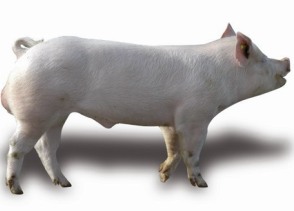Provimi: Boar fattening most efficient

Dutch international animal nutritional company Provimi has confirmed that boar fattening is more efficient in FCR in comparison to fattening barrows, vaccinated boars or gilts.
The company has focused on the topic since the Netherlands are moving away rapidly from the use of castration in young piglets. The company researched boar fattening on their research farm De Viersprong in the Netherlands.
Four treatments
In total, four treatments were included: boar fattening with and without (anti boar taint) vaccination (Improvac, Pfizer), barrow and gilt fattening. Feed conversion rate was highest for barrows due to high feed intake. Boar fattening proved to be the most efficient.
Performance results of swine fattening trial 0-123 days.
Sex | Daily gain (g) | Feed intake (g/day) | FCR |
Barrow | 867 | 2,302 | 2.66 |
Boar | 837 | 1,891 | 2.26 |
Vaccinated boar | 867 | 2,039 | 2.34 |
Gilts | 795 | 1,939 | 2.44 |
“The vaccination of boars on day 80 has led to a strong increase in both feed intake and daily growth: boars start to act as barrows after the second vaccination,” said Pieter Wolleswinkel, product manager swine Provimi.
From a financial point of view, the margin on feed costs is highest for non-vaccinated boars. Yet this does not include any additional costs or reduced revenues due to boar taint problems. Vaccination of the boars also proves to be economically beneficial over barrow fattening (vaccination costs not included).
Financial results of swine fattening trial.
Sex | Barrow | Boar | Vaccinated boar | Gilt |
Hot carcass weight, kg | 129.9 | 125.8 | 128.5 | 121.6 |
Corrected carcass price, € | 124.54 | 127.64 | 125.60 | 126.12 |
Feed costs per animals, € | 76.60 | 62.80 | 66.82 | 64.90 |
Margin over feed costs, € | 47.94 | 64.84 | 58.78 | 61.22 |
The data from this trial offered an opportunity to verify the company’s nutritional requirements of boar fattening.
Related website: Provimi











